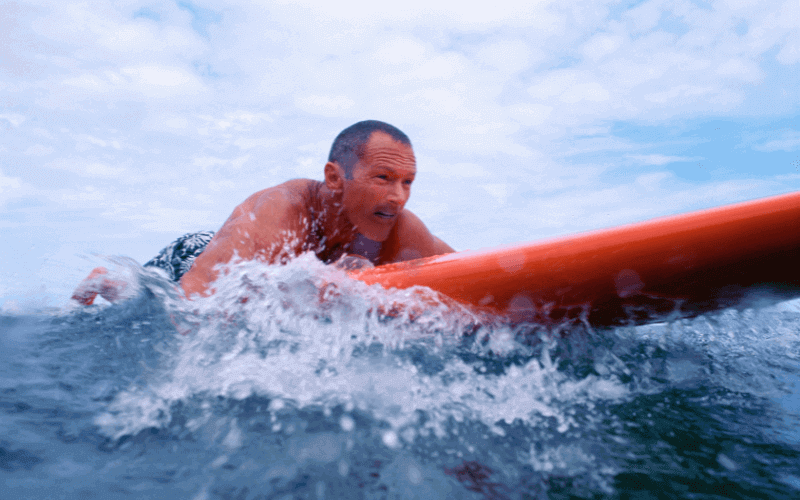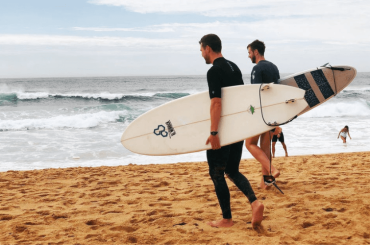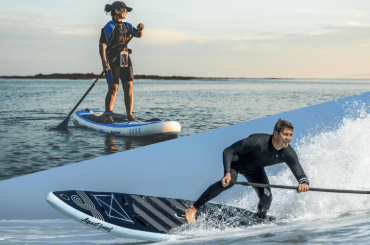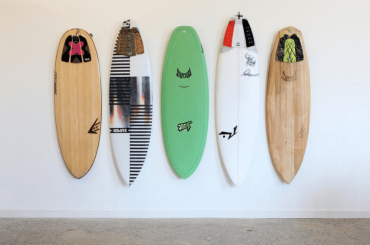Ever since the movie “Waterworld” was released in 1995, people have been fascinated by the idea of surfing on a fish surfboard. While the movie was fictional, there is a real-life sport called “fish boarding” that allows you to do just that!
These boards are designed specifically for coastal areas that have smaller waves and they can be ridden in a variety of ways. So, how do you ride a fish surfboard?
Keep reading to find out!
What is fish surfboard and how does it work compared to other boards?
A fish surfboard is a shorter, wider and thicker board than a standard shortboard. The extra width and thickness make the board more buoyant and stable in the water, while the shorter length makes it more maneuverable.
Fish surfboards work best in smaller waves and are a great choice for beginners or those looking for an easy-to-ride board.
Other types of surfboards, such as longboards and shortboards, are designed for different wave conditions. Longboards are better suited for bigger waves, while shortboards perform better for smaller waves.
For this reason, fish surfboards are often referred to as “fun boards” or “step-down boards,” since they offer an easy transition from a longboard to or shortboard.
If you’re looking for a board that’s easy to ride and performs well in small waves, a fish surfboard is a great choice.
How do you ride a fish surfboard and what are the basic steps?
Following are the basics steps of riding a fish surfboard:
- Start by lying on your stomach on the board with your arms extended in front of you.
- Using your arms, paddle out to where the waves are breaking.
- Once you’re in position, wait for a wave to come and then start paddling with your arms to catch it.
- As the wave picks you up, start kicking your legs to get into a standing position.
- Ride the wave until it dissipates and then paddle back out to catch another one.
Fish surfboards are a great choice for those looking for an easy-to-ride board that performs well in small waves. Follow these steps and you’ll be surfing like a pro in no time!
Tips & Tricks for Mastering in Fish Surfboarding
Here are a few tips and tricks to help you master this unique surfing style:
- Start by paddling out into the waves on your belly.
- As you get closer to the wave, start to rise onto your knees.
- When you are ready to catch the wave, pop up quickly and smoothly onto your feet.
- Ride the wave into the shore.
- Practice, practice, practice! The more you surf, the better you will become at this unique style.
What are the best waves for riding a fish surfboard?
The best waves for riding a fish surfboard are small, gentle waves. This type of board is not designed for big waves or aggressive surfing. Look for waves that are between two and four feet tall and have a slow, rolling motion. These are the perfect conditions for fish surfboards.
Also, fish surfboards work best in coastal areas with sandy bottoms. This is because the extra width and thickness of the board can make it difficult to maneuver in rocky or reef-filled waters.
Because these boards are so versatile, they can be ridden in a variety of ways. So, experiment with different techniques and find what works best for you!
Riding a fish surfboard is a great way to enjoy the waves without having to worry about big waves or aggressive surfing.
Related Article: How Do I Know If My Surfboard Is Waterlogged?
How to stay safe while surfing on a fish board?
While surfing on a fish board is relatively safe, there are a few things you should keep in mind to stay safe while surfing.
1) Check Weather Conditions
First, always check the weather conditions before going out to surf. This will help you know what to expect and how to dress appropriately.
2) Aware of Surrounding
Next, it’s important to be aware of your surroundings and other surfers while you’re in the water. Be sure to give other surfers plenty of space and never drop in on someone else’s wave.
Also, be aware of any obstacles in the water that could potentially hurt you. These include rocks, reefs and other surfers.
3) Know Your Limits
It’s important to know your limits and only attempt to surf waves that are within your ability level. If you’re unsure of your abilities, it’s always best to err on the side of caution and paddle in instead of trying to ride the wave.
4) Wear The Correct Gear
Finally, be sure to wear the correct gear while surfing. This includes a wetsuit, life jacket and helmet if you’re surfing in cold water.
By following these safety tips, you can help ensure a fun and safe experience while surfing on a fish board.
Where can you find more information about learning to ride a fish board?
If you want to learn more about riding a fish board, there are the best resources that can help.
1. Local surf shop
One option is to find a local surf shop or school that offers lessons. This is a great way to get one-on-one instruction from an experienced surfer.
2. Online tutorials or videos
Another option is to check out online tutorials or videos. Several great resources can be found with a quick search on the internet.
3. Read books or articles
Read one of the many books or articles that have been written on the subject. This is a great way to learn more about the basics of surfing and find out more about this unique style.
4. Join a surf club or group
Join a surf club or group. This can be a great way to meet other surfers and get information about where the best waves are.
5. Talk to other surfers
Finally, one of the best ways to learn more about riding a fish board is to talk to other surfers. Ask them for tips and advice on where to surf, what equipment to use and how to stay safe while surfing. By talking to other surfers, you can get a wealth of information that can help you become a better surfer.
Riding a fish surfboard is a great way to enjoy the waves without having to worry about big waves or aggressive surfing. By following these tips, you can help ensure a fun and safe experience while surfing on a fish board.
Also Read: Why Do Surfers Put Surf Wax On Their Surfboards?
FAQs – riding a fish surfboard
How do you pop up on a fish surfboard?
When you are ready to catch the wave, pop up quickly and smoothly onto your feet. This key is to be quick and smooth when popping up, as this will help you stay on the wave.
Are fish surfboards easy to ride?
Fish surfboards are relatively easy to ride, as they are stable and have a lot of floats. However, it is still important to practice and get comfortable with this type of board before taking on big waves.
Are fish boards good for small waves?
Fish boards are good for small waves because they allow you to catch more waves and get more speed. Fish boards are also great for maneuverability in tight turns.
Can you surf big waves with a fish surfboard??
You can surf big waves with a fish board, but it is important to be experienced and know your limits. It is also important to wear the correct gear, including a wetsuit and life jacket and to be aware of your surroundings.
Wrap Up
If you are looking for a unique surfing experience, consider trying out a fish surfboard. With its wide shape and buoyant construction, the fish board can help you catch more waves and have more fun in the water.
Before buying or renting a fish board, be sure to try it out first to make sure it is the right fit for your skill level and surfing style. Thanks for reading!





